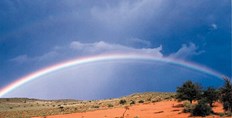Agri Hour
A look into SA’s pork industry─── ELSABÉ RICHARD 05:00 Wed, 12 May 2021

Johann Kotzé, CEO of the South African Pork Producers’ Organisation (SAPPO), sheds some light on the South African pork industry.
He takes a look at biosecurity as well as genetics, amongst other important factors.
See PODCAST below
In an interview with Agri Gauteng, Kotzé shares that SAPPO creates its income through the statutory levy. This means that the organisation gets a levy for every pig that is slaughtered at an abattoir. In turn, the pork industry is then managed with these levies.
Kotzé adds that South Africa has a little over 140 abattoirs that slaughter pigs, of which only five of them have export status.
Pig production takes place all over the country with Gauteng, Eastern Cape, and the Western Cape being the biggest producers.
Furthermore, when looking at barriers to enter into the pork industry, Kotzé says that food safety is non-negotiable. However, he says that this is a challenge in South Africa.
Biosecurity is one of the important aspects of running a successful and reliable pork industry. But, this can be capital intensive. Adding to that, Kotzé says risk mitigation is of importance to the industry. He says that this also creates capital-intensive barriers. When one wants to mitigate risks, you have to inject capital into infrastructure to make sure that affordable, nutritious, and healthy pork meat is produced.
Also, genetics is a big driver in the local industry and Kotzé says that not many people are aware that the local pork industry utilises international genetics. There are three major genetic companies in the country.
When looking at production costs, 65% to 70% of costs are for feed. “Feed conversion rate for us means the amount of feed we put into the pigs and the total amount of pork that we get out – it is quite a big focus for us. So, therefore the price of feed is for us a big driver of our total costing.
“And that is why you would see all the large farmers either have their own feed factories and feed mills to make sure that they can mitigate any fluctuation in the feed costs,” explains Kotzé.
With that being said, the scale of the economy plays a big role within the industry, and larger farmers are more prone to survive the fluctuation in the economically unsure world we live in.
OFM News














